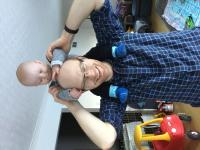Article,
A multivariate analysis of age-related differences in default mode and task-positive networks across multiple cognitive domains
Cereb. Cortex, 20 (6): 1432--1447 (June 2010)
Abstract
We explored the effects of aging on 2 large-scale brain
networks, the default mode network (DMN) and the task-positive
network (TPN). During functional magnetic resonance imaging
scanning, young and older participants carried out 4 visual
tasks: detection, perceptual matching, attentional cueing, and
working memory. Accuracy of performance was roughly matched at
80\% across tasks and groups. Modulations of activity across
conditions were assessed, as well as functional connectivity of
both networks. Younger adults showed a broader engagement of the
DMN and older adults a more extensive engagement of the TPN.
Functional connectivity in the DMN was reduced in older adults,
whereas the main pattern of TPN connectivity was equivalent in
the 2 groups. Age-specific connectivity also was seen in TPN
regions. Increased activity in TPN areas predicted worse
accuracy on the tasks, but greater expression of a connectivity
pattern associated with a right dorsolateral prefrontal TPN
region, seen only in older adults, predicted better performance.
These results provide further evidence for age-related
differences in the DMN and new evidence of age differences in
the TPN. Increased use of the TPN may reflect greater demand on
cognitive control processes in older individuals that may be
partially offset by alterations in prefrontal functional
connectivity.
